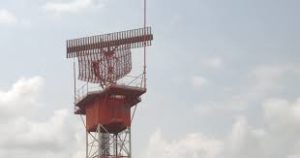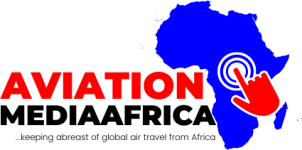
There is progressive deterioration of services provided by the Nigerian Airspace Management Agency, due to the inability of the federal government to complete projects that would have reinforced and improved service delivery, as most existing equipment become obsolete.
Services provided by the Nigeria Airspace Management Agency (NAMA) are being hampered by the inability of the agency to upgrade its equipment, complete on-going projects that ought to reinforce its efficiency in service delivery, a development that has compelled Nigeria’s airspace to experience hiccups in the areas of communication, navigation and surveillance, which are the key support provided by NAMA for safe flight operations in Nigeria and beyond.
NAMA is aviation agency that seemed prepared to deliver so much, and has showed off a lot of advancements, but in practical terms, such advancements are beginning to show cases of decline with dashed hopes and expectations.
NAMA had bragged about satellite based communication, performance based navigation, total radar coverage of Nigeria’s airspace and full communication of Nigeria’s airspace both for domestic flight service over fliers and even beyond the precincts of the nation’s airspace, but in practical terms, it has delivered less.
Few years ago, NAMA showed off completion and efficient service of its Controller-Pilot Data Link Communication (CPDLC), which is a two-way data-link system by which controllers can transmit non-urgent ‘strategic messages to an aircraft as an alternative to voice communications. But today, indications show that the service is not available. Sometime ago, NAMA accused airlines of not having on-board corresponding equipment to utilise the system, but airlines shot back that all their modern aircraft have the needed equipment. The argument ended in sullen silence.
Also, some years ago, NAMA boasted of having completed Performance Based Navigation (PBN), which aims to ensure global standardisation of RNAV (Area Navigation) and RNP (Required Navigation Performance) specifications and to limit the proliferation of navigation specifications in use world-wide. PBN is advanced satellite based system, which is described as a revolutionary approach in aviation that focuses on enhancing flight efficiency through the use of satellite. But the agency so far has not indicated that the system has become operational and fully used by airlines.
“Most of our infrastructure that are based on solar are not working. They are there but how many airlines have the corresponding equipment. CPDLC was completed then but it is underutilized. The pilots need to be trained on the system and the airlines ought to have on-board equipment in their aircraft to use the service,” an insider from NAMA told THISDAY.
The Total Radar Coverage of Nigeria (TRACON) was a landmark achievement for Nigeria. The project, which enables controllers to see image of aircraft in the radar scope for easy separation has never rendered complete services since it became operational in 2010.
AIS Automation
In the area of communication, NAMA in the past 10 years has embarked on the automation of Aeronautical Information Service (AIS), which provides information necessary for the safety, regularity and efficiency of international air navigation. The services provided by AIS are invaluable and these include flight information service: traffic information, meteorological information, information on runway state and other information useful for the safe and efficient conduct of flight. It is also the channel for dissemination of information on weather, weather report and others.
Two years ago, hopes were raised that the project would be completed but today, it has not been completed.In 2023, NAMA claimed it had put to an end the perennial problem of communication in Nigeria’s airspace with the completion of its Aeronautical Information Service (AIS) project slated to be completed before the end of that year. But in June 2025, the project is not completed.
The agency said it had to first provide electricity to power its communication facilities across the nation.
“We started with the power audit. You know when you want to diagnose a problem you have to look at the symptoms before administering a drug. So much have been done in-house. We put a committee together made up of engineering, people that own communication and operations, which are the user department. So, they have identified key things, key deliverables that we have started working on in order to close that gap. One of them is power.
“Immediately, we rolled up solar powered transmitters, and this has helped in bridging the gap for our communications,” said the then Managing Director of NAMA, Mr. TayibOdunowo.
TRACON
Inside NAMA source told THISDAY that TRACON is getting obsolete and for it to be upgraded to be in tandem with modern technology, it needed to be modernised before it is upgraded and this has not happened. The equipment used for navigation and surveillance needed to have the current scopes from A to C scopes to enhance the Plan Position Indicator (PPI) display, visual representation of range and bearing to targets. TRACON started work in 2010 and has operated for 15 years but not without hiccups.
“To bring it up to the current technology in that area, it has to be modernized,” an insider told THISDAY.
There are also considerations that the equipment might be replaced, which would cost huge sum, but with modern system that will dovetail with the latest equipment used currently in different parts of the world.
Also, the agency had requested for Safe Tower. Known simply as control tower, aircraft communicate with the tower via certain radio frequencies to keep airport operations safe. NAMA wants to upgrade at least in four major airports of Abuja, Lagos, Port Harcourt and Kano, but this has not been done. NAMA wants to automate the system and integrate with modern technology and end the manual process which takes time and lacks precision. Today, the large consul at some of the existing towers, have become obsolete and they ought to be digitised with the installation of new consuls.

Multilateration
Some years ago, NAMA hinted that it had started building Multilateration Technology (MLAT) project and two years ago, it announced that it was almost completed but today, the supposed completed project has not been put in use. MLAT is supposed to capture low flying aircraft like helicopters, especially in the Niger Delta, where oil and gas activities attract a lot of chopper operation.
In 2023, NAMA said in a statement: “The project is 90 per cent completed. It is basically concentrated more in the Delta. That region is the busiest airspace right now in Nigeria. If you look at the proximity of all the airports, you have all these low flying objects.
“What NAMA is trying to do is to make sure that anything that flies in the Delta region is picked by the Satellite Based Augmentation System (SBAS). But right now, we intend to deploy Multilateration Technology (MLAT) all over Nigeria, starting from the Delta region. Don’t forget even in foreign countries MLAT kind of superimposes your regular radar. So, they actually work hand-in-hand.”
But today, THISDAY learnt that the project was completed but it is not operational because the communication system was not incorporated, and the system ought to have been included from the inception of the project.
“That communication aspect was not integrated. You can see the images but it is not only the images that are needed; you also need to communicate. It should have been built in it from inception in the conception of the project. Somebody pointed out that error,” an official of NAMA, told THISDAY.
Funding
THISDAY investigation revealed that the major challenge faced by NAMA is funding. The federal government has not been releasing funds for these projects. However, industry insiders accused NAMA of not prioritizing its projects and literally put all its five fingers in the mouth.
Former Managing Director of NAMA, Captain FolaAkinkuotu, told THISDAY that a lot of projects take unduly long time to complete because of payment.
“If you don’t have the funding on schedule, the contractor will not deliver on schedule. During our time, we pushed for the completion of these projects but we were handicapped by non-availability of funds. So, if they are not funded, their completion will be delayed and this is not limited to the aviation industry; it goes across all the sectors,” he said.
Akinkuotu who was former Director General of the Nigeria Civil Aviation Authority (NCAA), a seasoned pilot and aeronautical engineer, said government should brainstorm on funding options in order to complete these projects in time. One of the options is looking at Public, Private Partnership (PPP) for some of the projects that could yield to such funding option, so that there could be money available for such projects that could be solely completed by the federal government.
He also indicated that even if the federal government stopped taking remittances from NAMA it may not still have enough funds to execute these projects because the agency is not profit making; rather, it engages on cost recovery for the expenses incurred in providing services.
“We also have to think of how to fund these projects. We have to think out of the box. These must be ways before technology will render these projects irrelevant. If you enter into PPP arrangement, it will free some funds for other projects that cannot be done under PPP,” he said.
Poor Services
The inability of NAMA to complete major projects has infringed on its efficiency and has cut back its full coverage of the nation’s airspace in the area of communication. THISDAY learnt that some flights coming to Nigeria have to depend on Ghana’s Flight Information Region (FIR) and in doing that they pay Ghana for over fliers. This means that NAMA is already losing some of the over flier revenue which is paid in dollars.
Another former Managing Director of NAMA and currently the Managing Director and CEO of Aero Contractors Limited, Captain Ado Sanusi, recalled that he was the one that kicked off the TRACON project and by the time he left office it was about 95 per cent completed. He said if the TRACON was working effectively it would improve safety in the airspace, generate revenue and Ghana would not be making money off Nigeria.

“We have to go back to the basics. The current Managing Director of NAMA is knowledgeable and must be working towards actualising these projects but a lot needs to be done. It is this lack of funding that gave rise to the decay. Nigeria used to be red carpet corridor where pilots like to pass through to Southern part of Africa and Middle East. The red corridor is supposed to be one of the busiest but due to poor communication in Nigeria and the Sahara area, airlines now shun the airspace,” he said.
Sanusi recalled that when he was the Managing Director of NAMA, the agency wanted to work with West Africa and North Africa through collaborations with all the countries in those regions to enhance communications that dovetail all the airspace.
“If communication is not effective in the airspace NAMA will not generate revenue. TRACON’s eight sites for primary and secondary radar linked by Very Small Aperture Terminal (V-SAT) networks covering a 256 nautical mile radius, include Lagos, Kano, Abuja, Port Harcourt, Maiduguri, Ilorin, Talata-Mafara (Sokoto), Obubra and Numan. These sites overlap coverage to ensure comprehensive radar surveillance across the country. But any site that is down affects the entire system,” Sausi said.
THISDAY investigations however revealed that welfare package has improved in NAMA, and the agency has also improved workers remuneration, which has motivated the workers in doing their jobs more efficiently, a development that has helped to make the highly sought-afterAir Traffic Controllers to stay back in NAMA. Iformed source revealed that the agency lost about 300 controllers in the past year.
It is very important that the deterioration going on in NAMA services is urgently addressed by rejuvenating existing equipment and completing the on-going and abandoned projects, in order to avoid continuous inefficient service delivery that could infringe on safe flight operations in Nigeria.






